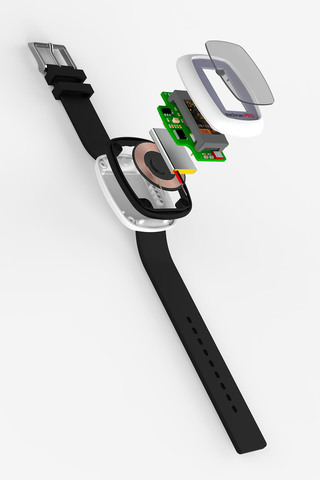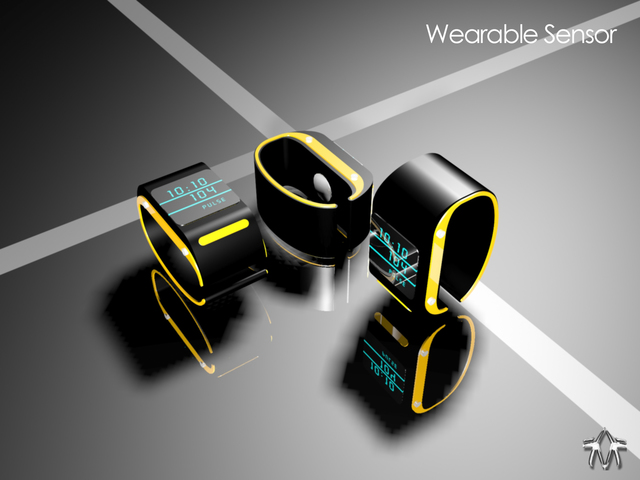Wearable device have been touted to change the way people interact with smart devices in a revolutionary way. Wearable device designers advertise their products as if without them, your life would be incomplete. With that kind of buzz, it’s easy to fall into the trap of utilizing as many features as the device could possibly muster. In reality, this kind of approach would be reckless because it comes with an implicit intention to invent a whole new product category rather than refining an already existing one.
A robust product development process and proper prototyping techniques will help you avoid this mistake. While prototyping is not meant to build a finished product, a prototype should deliver a product as similar to the actual product as possible. It is important to manage your expectations in terms of goals and objectives so you can plan the appropriate prototyping method for your next wearable technology.

At a glance, many wearable devices look identical to other products in their category, whether they be smartwatches, activity trackers, or head-mounted displays such as those used by 3D AR/VR architectural services. Even if each device has its own proprietary technologies underneath, your average user won’t notice the unique aspects of each product until they use (or wear) multiple different devices.
To make sure potential customers are aware of every distinctive feature and functionality your wearable has to offer, research must be done to pinpoint the product’s value proposition and key selling points, allowing you to build a solid foundation for physical development and real-world testing. In spite of those distinctive elements, the processes for building the prototypes share a lot of similarities. There are five basic stages:
Feasibility prototype
Not every piece of technology is technically feasible. Even if it is, the marketability factor must be considered too. For example, embedding a heart rate sensor into a smartwatch band made of fabric can be a risky design choice. At this stage, the electronic prototyping and design service must ignore all other factors to be able to develop the element in isolation.
RELATED: Different Kinds of Prototypes and How to Use Them for Your Design Project
The usual practice is to put the sensor in the back plate of the module for a more accurate reading, and that is what people expect. The product’s place in the market can be either negatively or positively affected depending on the design development result. If a design element is not technologically feasible, you have to ditch it from the get go.
Form factor
The next stage is called the “looks like” process. Once again, form factor development is done in isolation. In wearable device prototyping, form factor development is the least challenging phase—you must consider aesthetic and ergonomic factors. Not only is the device pleasing to the eyes, but it’s also comfortable to wear.
System prototype
With the feasibility and form factor already determined, the prototyping process continues with the functional aspects of the system. This is the part where you configure all the electronics, power supply, wireless communication technologies, sensors, and firmware that runs the entire system. Since you are still in a rapid prototyping stage, you don’t have to cram everything (yet) into the form factor. The most important thing is to make sure everything works as intended.
Concept prototype
Based on the results of all previous stages, a physical rendering of the eventual product comes to mind. It is built based on the Form Factor, complete with the embedded technologies successfully brought together as a single unit in the System Prototype stage. The end result is a “beta version” or “working concept” that you can test in the real world. User feedback at this stage is priceless as it will kick-off more serious changes to both the form and function of the wearable. Consider working with a concept design service at this stage.
Production prototype
It’s all about making the product a reality. Through countless refinements based on technical feasibility followed by exhaustive testing and user feedback, the production process may begin by utilizing proper production equipment to help minimize failure rate and cost. The prototype still has to go through even more testing to validate and verify all its desired functions.
Some design tips
Wearable devices present their own design challenges, unlike smartphones and typical digital wristwatches. It has to serve more functions than a regular timepiece, yet it cannot be as complex as a smartphone. A wearable device like a smartwatch or something an electronics enclosure design service may make to both simplify the functions of a smartphone and mimic the experience of a regular watch. Here are some design tips to follow.
Approach to minimalism
Everything from the form factor, user experience, and visual elements must be simple and straightforward. You can use the concept from flat design to accentuate the minimalistic approach. One term that comes to mind is “glance-ability,” which refers to information displayed on the screen and designed for very brief moments of interaction.

Think of it as delivering accurate headlines instead of the entire news. Glance-ability is not about reducing visual feedback. It revolves around compiling the right amount of information users need to see at any given moment.
Vibration notification
You can offer the option to use both sound and vibration, but never sound only. Vibrations must happen in an obvious way yet be soft enough that they do not make the user uncomfortable. Choose only a select few types of information to associate with certain patterns of vibration. Notifications cannot happen too often or users will quickly become frustrated. The idea of a wearable device is to reduce or simplify the user’s interaction with the digital world.
RELATED: 9 Design and Engineering Tips for Reducing Manufacturing Costs on New Product Designs and Prototypes
When a supposedly care-free device requires a lot of attention, the user is more inclined to abandon the device. Having a smartphone constantly buzzing in your pocket is always more tolerable than a smartwatch that vibrates every minute.
Quick meaningful interactions
Given a simple interface showing only the essential information, users can quickly take the appropriate action to complete a task. A smartwatch doesn’t need to bring up an input keyboard each time a user wants to reply to a text message. It is always best to show a selection of predefined responses, or let users set them using additional tools such as a linked smartphone or computer.
Provide a voice input option for longer replies. This way users never need to take out their smartphones from their pocket throughout the entire process. Just like on every small screen device, every single pixel matters more. You don’t have enough room to display everything, so ditch what you don’t need.
Mirror the visual elements of linked devices
A wearable device, especially a smartwatch or fitness tracker, is not a stand-alone technology. Due to the small screen and limited functionality, it merely acts as an extension of other devices, including a smartphone and computer. In most cases, wearable devices use apps to function properly. These apps are also companions to their full-screen versions accessible on the web.
For a seamless interaction, the wearable device needs to integrate a similar UI. A fitness tracker can gather data of your more recent workout such as heart rate per minute, calories burned, distance, locations, time, and laps. However, the user still needs to access a web app for more detailed analysis and suggestions on how you can improve. The interface on the fitness tracker should look just about the same as the web app.
Privacy matters
With the constant development of apps for wearable devices, users can choose to track some personal information, such as health data and private conversations. Unlike smartphones that are usually kept inside a pocket, a wearable device is in plain sight for everyone to see. The term glance-ability is for you – not anybody else – to understand the message on the screen at a glance.
Beautiful or invisible
In general, the form factor of wearable devices come down to two major categories: beautiful and invisible. A good design is not somewhere in between. Many brands actually don’t have anything new to offer in the technology department compared to others, but they can make their way to the market simply because they have better aesthetics.
RELATED: 9 Design and Engineering Tips for Reducing Manufacturing Costs on New Product Designs and Prototypes
Therefore, 3D product modeling services opt for developing the aesthetic elements only with the use of premium materials and elegant styling. On the other hand, there are technologically advanced wearables that come with a more understated nature, with a simple rubber band and blinking LEDs rather than a screen. To attract buyers, you have to make sure they understand that your wearable device is one of their everyday essentials.
Cad Crowd’s wearable device designers can help with any project
At Cad Crowd, we have the privilege of working with some of the best freelancers on the market. Whether you’re looking to have a wearable device designed or a whole different type of product altogether, we can help. Contact us today for a free quote.
